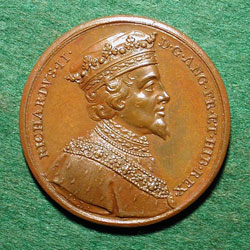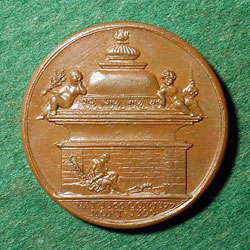

|
RICHARD II |
|
|
Richard II (1367-1400), King of England (1377-1399), was the son of Edward the Black Prince. Richard succeeded his grandfather, Edward III, at the age of 10. His minority was dominated by his uncle, John of Gaunt. Gauntís misrule exacerbated the economic decline caused by the Black Death and Englandís prolonged involvement in the Hundred Yearsí War (1337-1453), and precipitated the Peasantís Revolt (1381). In 1382 Richard was married to Princess Anne of Bohemia, the daughter of Emperor Charles IV. Upon the death of John of Gaunt, Richard confiscated the vast Lancastrian estates which had passed to Henry of Bolingbroke (later made Duke of Herford). In 1399 he made the disastrous mistake of leaving for Ireland, for in his absence Bolingbroke invaded England and rallied the nobility around himself. On his return from Ireland, Richard surrendered to Bolingbroke without a fight. He abdicated in 1399 in favor of Bolingbroke, who ascended the throne as King Henry IV. Later that year Richard was imprisoned in Pontefract Castle, where he died within a few months, likely from the rigors of his imprisonment, rather than by murder as alleged in the story adopted by Shakespeare. (Taken, in part, from Thompson) |
|